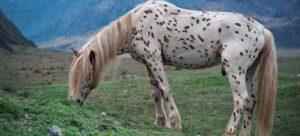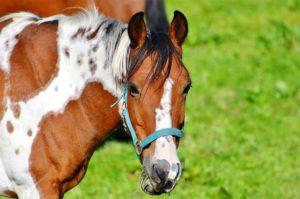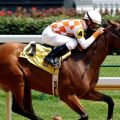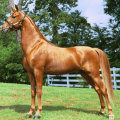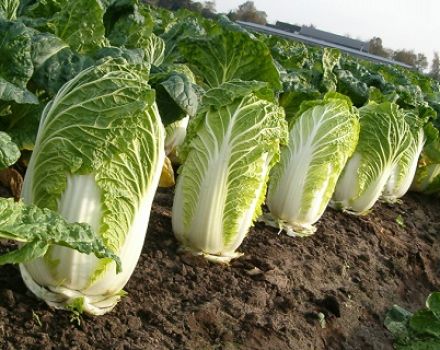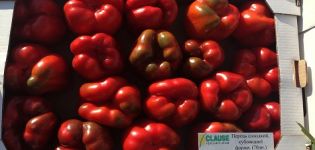What are the types of horse gaits and their differences, additional recommendations
The gait of a horse refers to the type of gait the animal follows. Often this term is used in relation to the varieties of race horses. But the usual gait also belongs to the given concept. The main thing that is important to know about gaits is that each gait is characterized by a change in movements performed by the animal. Also, the speed of the horse depends on the type of movement.
Types of gaits
Horses make many movements while running. The nature of muscle tension changes depending on the type of gait. As a result, because of this, the limbs of the animal move in different ways. However, with each type of running, a characteristic beat is observed, which is noticeable to both an outside observer and a rider. Paces are subdivided into several types, combined into 2 large groups: natural and artificial.
Each running type is rated based on the following characteristics:
- Rhythm, or the period of time during which the horse lifts the hooves off the ground and puts them back down.
- Temporhythm. This indicator hides in itself the number of blows made while moving.
- Support. The parameter determines the number of hooves that simultaneously touch the ground.
- Step. This parameter refers to the distance between the hooves during movement.
- The frequency, or number of steps a horse takes every minute.
The way a horse moves is important mainly for professional riders. The score and the result achieved in the competition depend on how accurately the animal observes the beat of a particular gait.
The main
Natural (basic) gaits are understood as the type of running that animals do on their own. That is, a person does not teach a horse how to move. Despite the fact that natural gaits are inherent in animals from birth, these types of running are also characterized by a number of features common to all horses.
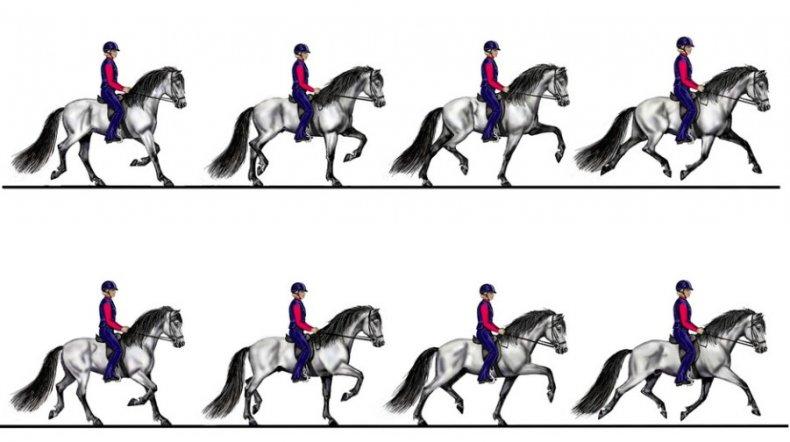
Step
This type of walking is common to all horses, regardless of age and breed. A step is characterized by four measures. During this movement, the animal first brings the right forelimb forward, then in turn:
- right back;
- left front;
- left back.
The step is also subdivided into 3 types. This type of walking is:
- Short. In this case, the hind limbs are located at a considerable distance from the front.
- Middle. The legs follow each other.
- Wide. With this type of movement, the hind legs go behind the front legs.
From the step begins the training of the horse in gaits, and for the rider this is the start of the animal control exercises. Due to the fact that the maximum speed during such movement does not exceed 8 km / h, it is possible to identify all the shortcomings while driving.

Lynx
The trot is a leisurely run where the speed does not exceed 10 km / h.This type of movement is two-stroke, characterized by the occurrence of the so-called "hovering period". In this case, the horse's limbs simultaneously move as follows: first, the right front and left hind legs, then the left and right, respectively (or vice versa). That is, the legs move crosswise during movement.
The rider feels the jolts of a horse moving at a trot. Therefore, the person in the saddle at this moment must adjust to the current type of movement and rise in time. Otherwise, you can lose balance and fall off the animal.
Depending on the speed of movement, the trot is divided into the following types:
- Thor. It is characterized by short strides and slow movement speeds.
- Collected. Steps in this case are shortened and become rhythmic. The horse starts to move a little faster.
- Sweep. The stride becomes longer and a "hover period" appears.
- Mach. Large stride and high travel speed.
- Frisky lynx. Frequent strides and maximum trot speed.

This type of movement is also divided into training and lightweight. The difference between these types of trot comes down to the position of the rider in the saddle.
Gallop
This is a fast running style, the speed reaches 70 km / h. In their natural environment, horses switch to gallop when predators approach or when it becomes necessary to overcome long distances. When galloping, the limbs move in the following order:
- back;
- front, located on the same side, and the second back;
- the remaining front.
Depending on the speed that the horse develops, the gallop is not divided into the following types:
- assembled (from 12 km / h);
- arena (up to 18 km / h);
- medium (24-28 km / h);
- added (48 km / h);
- quarry (over 60 km / h).

If the animal goes to the quarry, then the hind legs are often carried far beyond the front. The body at this moment begins to move rhythmically. The career is characterized by the fact that from the side it seems as if the horse is jumping, rather than running.
Additional
Artificial (additional) types of gaits are characterized by the fact that people teach this type of horse movement. There are also varieties of running that are specific to a particular breed of animal.
Amble
Amble is typical of American trotters and mountain riding species. With this riding style, the horse moves faster than the trot, but moves just as easily. This gait is considered an intermediate between natural and artificial. This type of running also includes:
- Telt. This type of gait is typical of Icelandic horses. Horses with a telt move in the same way as with a step, but develop great speed.
- Paso mino. Frisky movement, but a small step.
- Marsha. This type of gait is considered a type of amble that is characteristic of Brazilian horses. As in the case of the latter, the march is a genetically determined type of running.
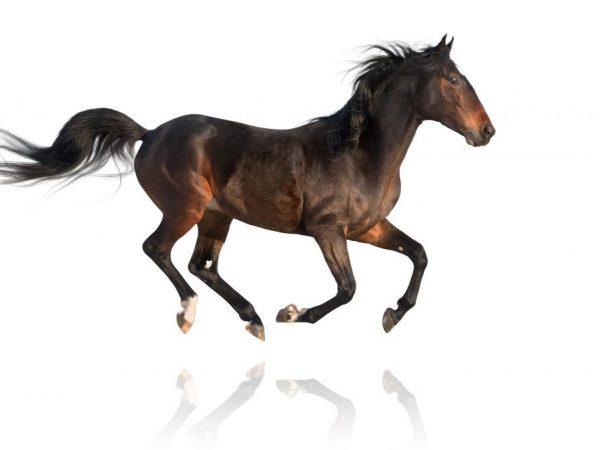
Compared to trotting, amble is more comfortable for the rider, as the horse moves faster, but the person experiences less discomfort. With this style, the right or left legs move at the same time. Because of this, the horse becomes clumsy, so amble is used when moving forward.
Half walk
This type of gait resembles the previous one. But when half-walking, the horse step changes. As in the previous case, the animal's limbs begin to move simultaneously. However, with this style of movement, the hind leg first lowers to the ground, and then the front leg. Therefore, amble is considered a two-stroke gait, and half-amble is considered a four-stroke.
Hoda
The move is understood as an irregular intermittent trot.With this type of movement, the hind hooves descend to the ground later than the front ones, as a result of which 4 knocks are heard. It is believed that the move is more convenient for the rider than the trot. This running style is typical of American horses, which were previously used for harvesting on plantations. However, some horse breeds move like this from birth.

Trope
Trampling is another kind of incorrect gait. In this style, the front legs move at a trot, the hind legs at a gallop. The opposite situation is also possible. The trope differs in that it characterizes the nervous state of the horse. If the animal begins to move unevenly, then this indicates the desire of the horse to quickly find itself in the stall.
Also, a tropot occurs when the horses need more movement, but the rider does not give it. In addition, in some animals this running style is caused by abnormalities in the structure of the spine.
Helpful hints and tips
Most horses are capable of maintaining the above gaits over a relatively long time span. However, in a trope, the rider must pay special attention to the condition of the animal. In particular, the rider in such cases must turn the head of the horse to the side. Thanks to this, the animal will take a step, but after a few meters it will return to the path again. Therefore, this procedure must be carried out constantly. The danger of the trope lies in the fact that over time this type of gait will become familiar to the animal. And the horse will stop running differently.
